Abstract
Hepatitis B remains a major public health problem in the United States, but public vaccination policy has targeted infants rather than the high-risk adults who constitute the vast majority of patients at imminent risk of infection. The effects of this policy were studied at a community health center in Boston. Adolescents and adults who attended a community health center between January 1, 1992 and May 31, 1993 and had human immunodeficiency virus (HIV) or another sexually transmitted disease (STD)--indications for vaccination according to the Centers for Disease Control and Prevention--were identified through chart review. The vaccination rate and missed opportunities were determined. In addition, directors of Boston health centers were surveyed on hepatitis B vaccine at their clinics. Of 178 individuals with HIV or another STD and without serologic evidence of prior exposure to hepatitis B, two (1.1%) received the vaccine. There were 342 missed opportunities. Only two of 14 medical directors said their clinics routinely offered vaccine to individuals with STDs. The medical directors rated financial barriers as more important obstacles to hepatitis B vaccination than nonfinancial barriers. These results indicate that many high-risk adolescents and adults do not receive a preventive intervention that is federally recommended, potentially life saving, and cost effective. Inadequate public funding for vaccine may be a key barrier for this population.
Full text
PDF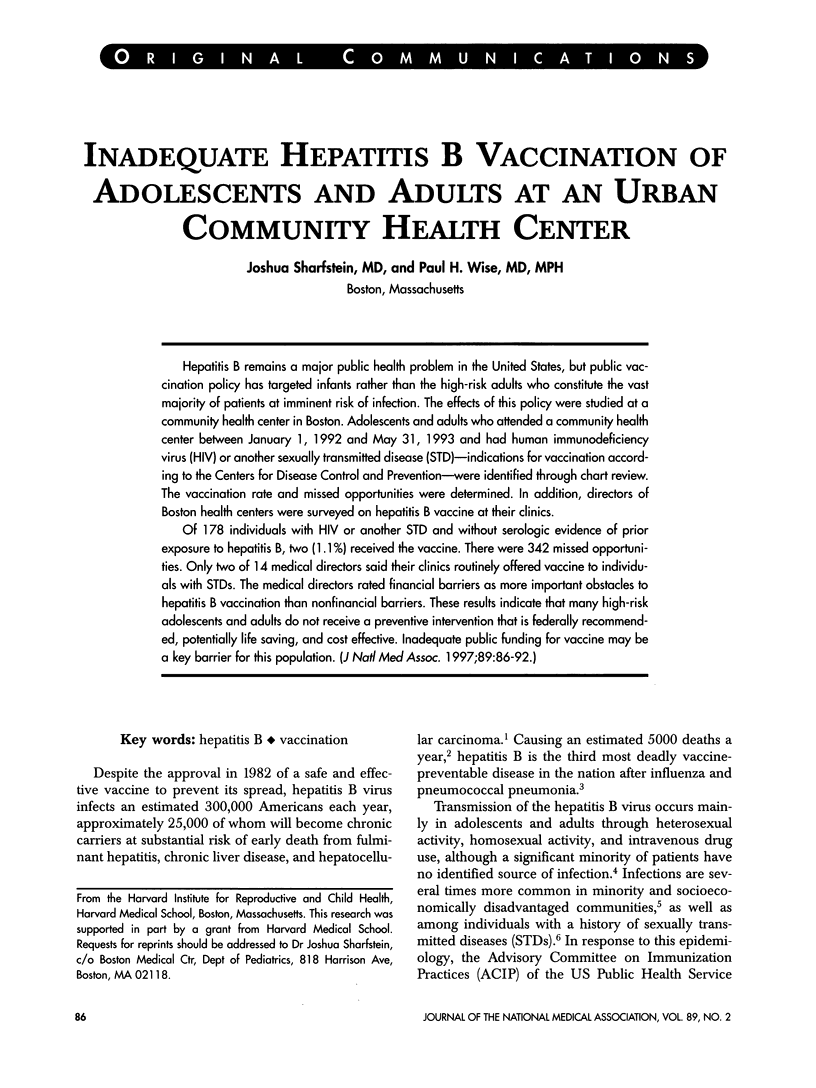

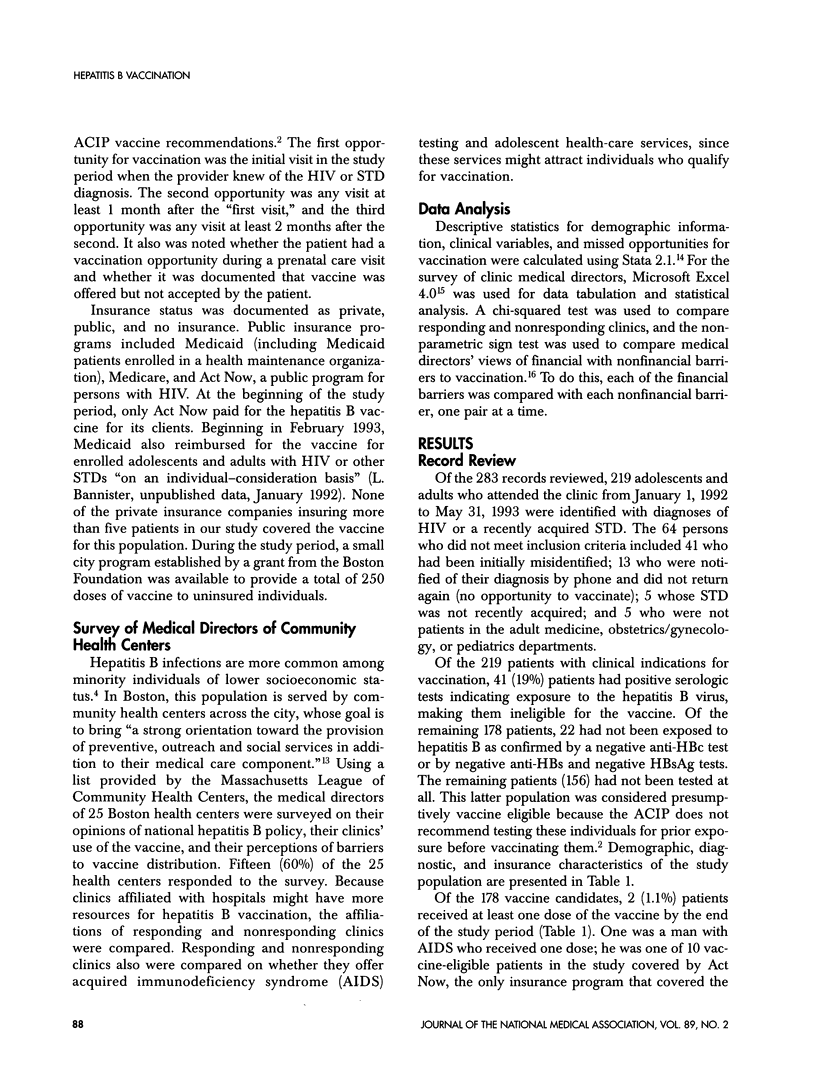
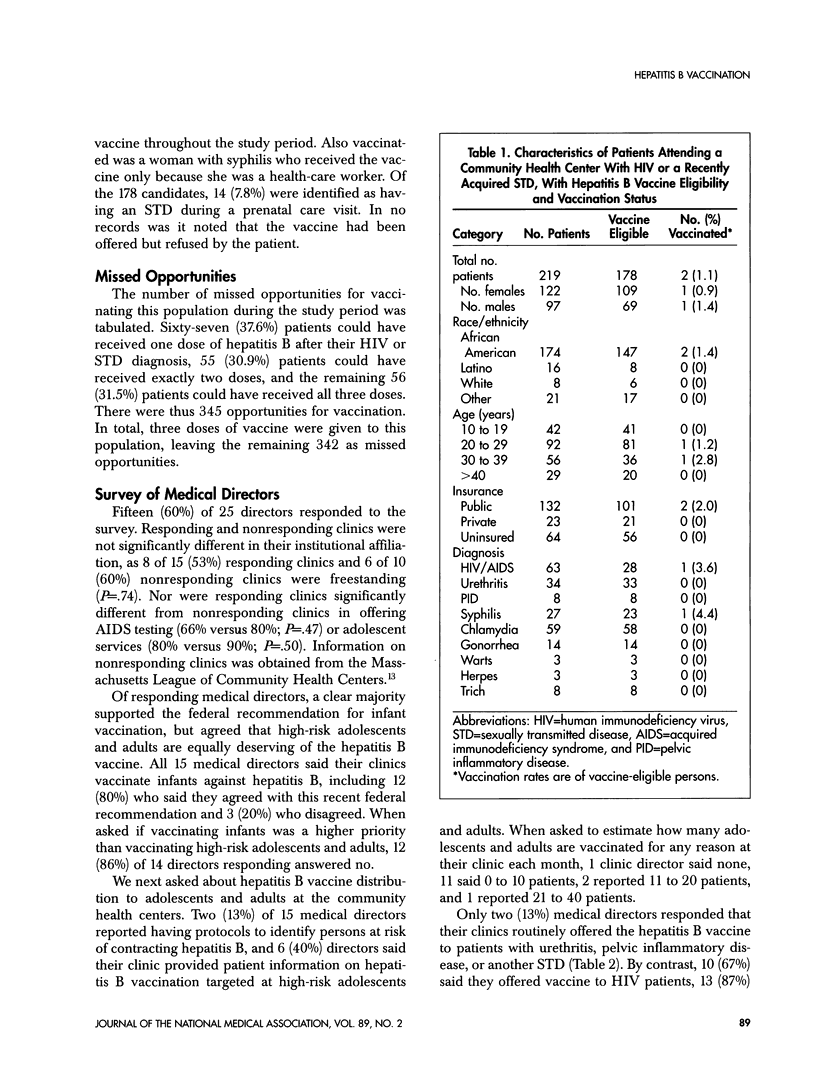
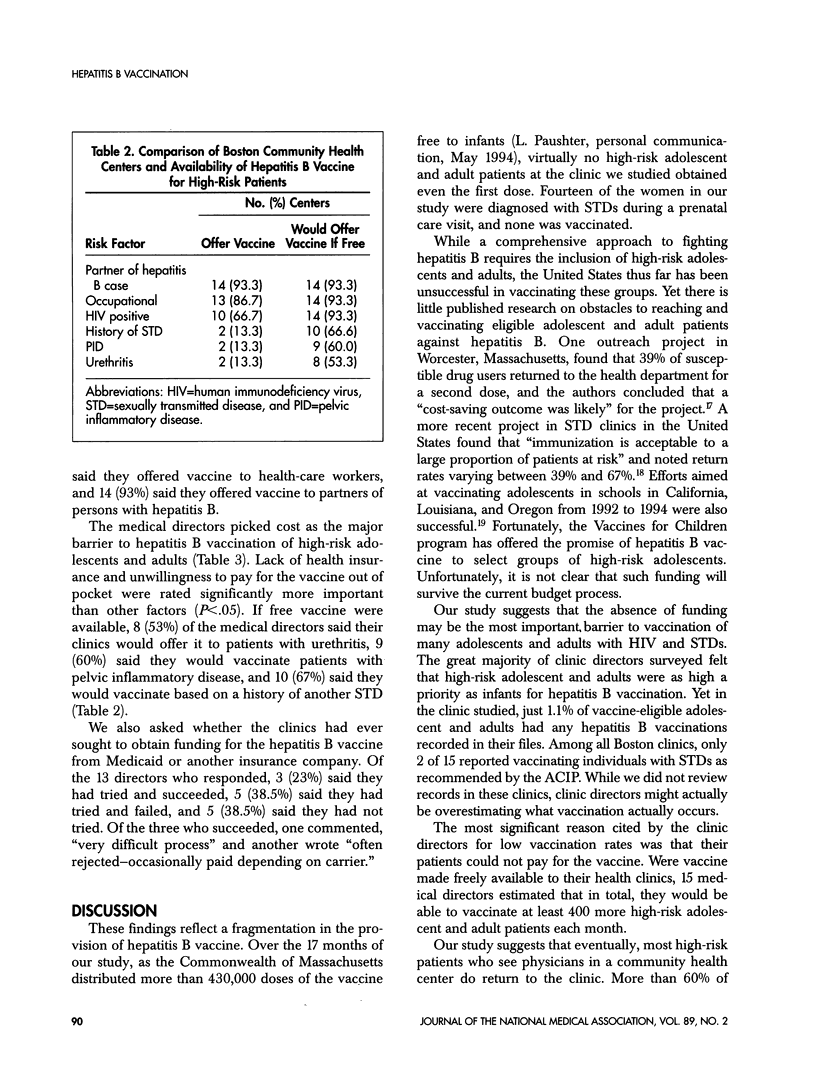
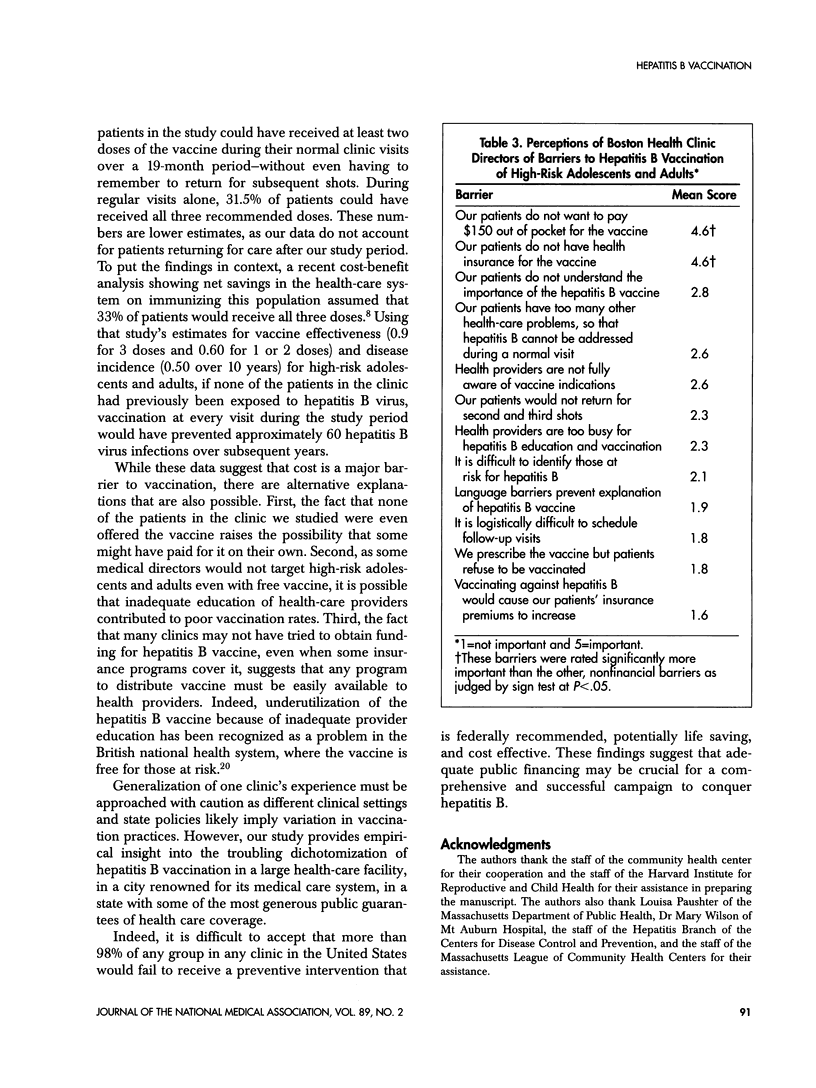
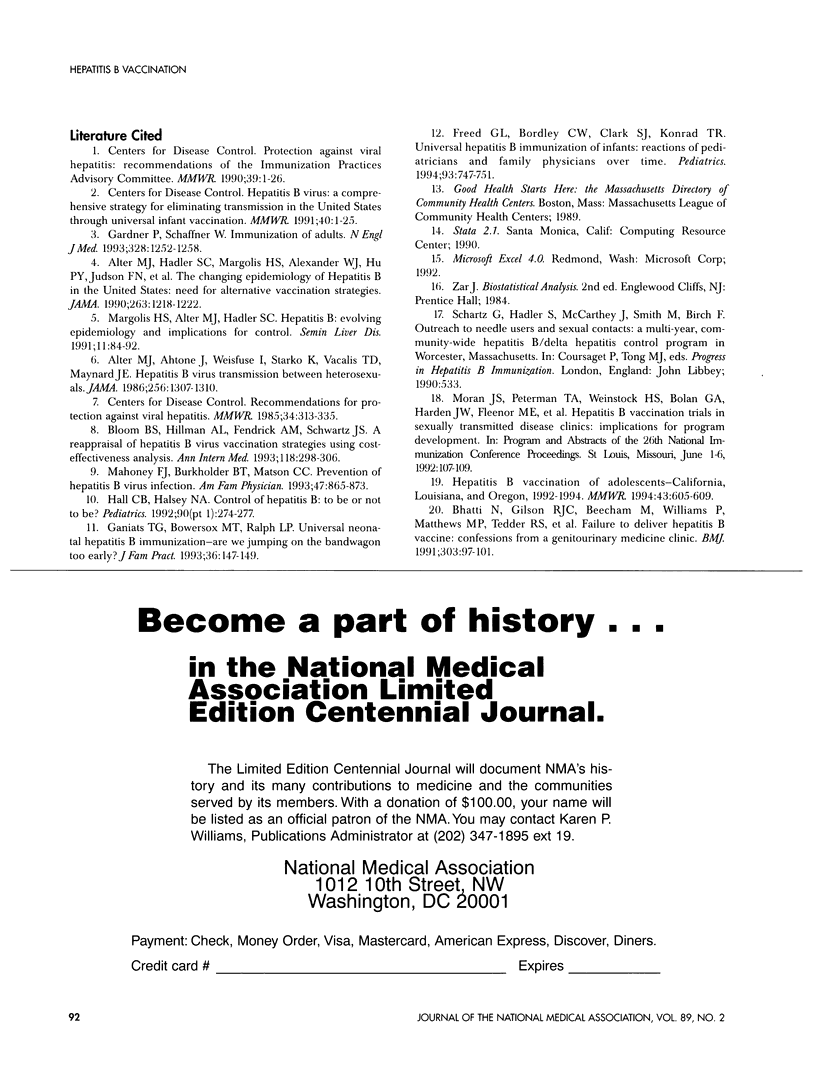
Selected References
These references are in PubMed. This may not be the complete list of references from this article.
- Alter M. J., Hadler S. C., Margolis H. S., Alexander W. J., Hu P. Y., Judson F. N., Mares A., Miller J. K., Moyer L. A. The changing epidemiology of hepatitis B in the United States. Need for alternative vaccination strategies. JAMA. 1990 Mar 2;263(9):1218–1222. [PubMed] [Google Scholar]
- Bhatti N., Gilson R. J., Beecham M., Williams P., Matthews M. P., Tedder R. S., Weller I. V. Failure to deliver hepatitis B vaccine: confessions from a genitourinary medicine clinic. BMJ. 1991 Jul 13;303(6794):97–101. doi: 10.1136/bmj.303.6794.97. [DOI] [PMC free article] [PubMed] [Google Scholar]
- Freed G. L., Bordley W. C., Clark S. J., Konrad T. R. Universal hepatitis B immunization of infants: reactions of pediatricians and family physicians over time. Pediatrics. 1994 May;93(5):747–751. [PubMed] [Google Scholar]
- Ganiats T. G., Bowersox M. T., Ralph L. P. Universal neonatal hepatitis B immunization--are we jumping on the bandwagon too early? J Fam Pract. 1993 Feb;36(2):147–149. [PubMed] [Google Scholar]
- Gardner P., Schaffner W. Immunization of adults. N Engl J Med. 1993 Apr 29;328(17):1252–1258. doi: 10.1056/NEJM199304293281708. [DOI] [PubMed] [Google Scholar]
- Margolis H. S., Alter M. J., Hadler S. C. Hepatitis B: evolving epidemiology and implications for control. Semin Liver Dis. 1991 May;11(2):84–92. doi: 10.1055/s-2008-1040427. [DOI] [PubMed] [Google Scholar]


